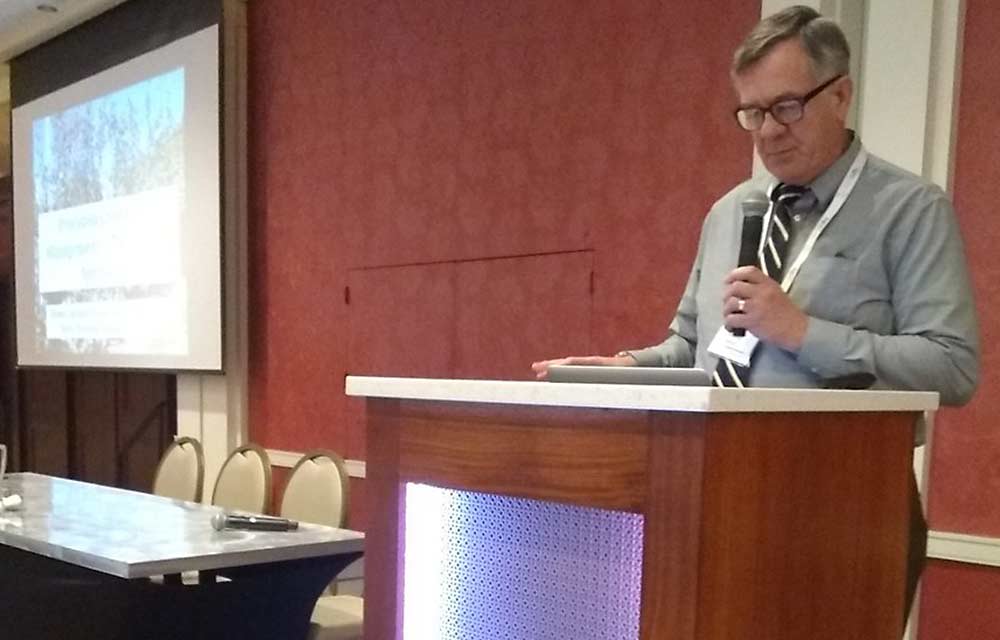The third day of “Precision Vision 2020,” the 63rd annual conference of the International Fruit Tree Association held in Grand Rapids, Michigan, focused on precision fruit growth and crop load management.
Terence Robinson, a tree fruit physiologist with Cornell University, discussed the Cornell approach to precision crop load management. Here are some takeaways from his talk:

—Precision crop load management seeks to manage the number of apples on each tree in a precise manner to obtain the best possible economic outcome. (“We’re talking a $10,000 per acre value” based on how you manage your crop load, Robinson said.)
—At its core, precision crop load management seeks to influence the process at three specific timings: pruning, chemical thinning and hand thinning.
—The first step is to establish a target number for final fruit per tree. Identify a goal based on the potential of the orchard and the climate.
—The final number of apples you end up with is positively related to the number of flower clusters per tree.
—Use precision pruning to prethin the trees, so chemical thinning will be more successful; eliminate 1 to 3 branches larger than three-quarters of an inch in diameter; columnarize (simplify) the rest of the branches.
—Calculate your target spur number and then count representative trees after pruning to ensure you’ve met that target.
—Robinson’s dream is to bring computer vision to the process of counting buds. Humans get bored and lose focus counting buds; a computer system could simplify the process and make it more precise.
—Will blossom thinning, accepted in the Pacific Northwest, ever be accepted in Eastern growing regions? Robinson thinks it will, and Honeycrisp will drive the process, because bloom thinning is essential for that profitable variety. “To control biennial bearing in New York state, we need to learn to do blossom thinning,” he said.
—Do not spray caustic thinners under slow-drying and wet conditions or if there is frost; frost damages fruit skin, and caustic thinners can then cause russetting (which is more common in the East).
—There is an app version of the Lakso carbohydrate model called MaluSim. It can be downloaded on your phone, from the Google or Android store. The app will tell you the predicted carbohydrate balance of the trees, which can guide your daily thinning decisions.
—The improved model uses relative bloom density to adjust predicted thinning efficacy for any given spray; it also uses bloom date to calculate degree days.
—Precision prune Gala for fruit size; prune Honeycrisp for return bloom at chemical thinning time.
—by Matt Milkovich
Related:
—IFTA’s first day has precise focus
—IFTA Day 2: Innovation in the cold
—IFTA Day 4: Innovation in the even colder






Leave A Comment